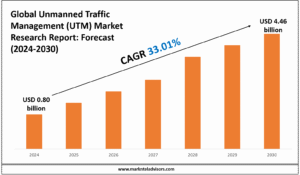Electroencephalography (EEG) is a vital tool in the field of neurology, providing insights into brain activity that can help diagnose and manage various neurological conditions. As technology advances, the software used to analyze EEG data has become increasingly sophisticated, offering features that enhance accuracy, efficiency, and usability. However, with so many options available, choosing the right EEG software for your practice can be a daunting task. This article will guide you through the essential factors to consider when selecting EEG software, including the benefits of platforms like neuromatch and the role of neurology software in modern practices.
Understanding EEG Software
EEG software is designed to capture, analyze, and interpret the electrical activity of the brain. It plays a crucial role in diagnosing conditions such as epilepsy, sleep disorders, and other neurological issues. The right software can streamline the process of data collection and analysis, making it easier for healthcare professionals to provide accurate diagnoses and effective treatment plans.
Key Features to Look For
When evaluating EEG software, consider the following features:
-
User -Friendly Interface: A clean, intuitive interface is essential for efficient data entry and analysis. The software should allow users to navigate easily through different functions without extensive training.
-
Data Analysis Tools: Look for software that offers robust data analysis capabilities, including real-time monitoring, artifact detection, and advanced filtering options. These tools can help clinicians identify abnormalities in brain activity more effectively.
-
Integration with Other Systems: The ability to integrate EEG software with other medical systems, such as electronic health records (EHR), can enhance workflow efficiency. This integration allows for seamless data sharing and improves patient management.
-
Customization Options: Every practice has unique needs. Choose software that allows for customization of settings, reports, and templates to fit your specific requirements.
-
Support and Training: Reliable customer support and training resources are crucial for ensuring that your team can effectively use the software. Look for vendors that offer comprehensive training programs and responsive support.
The Benefits of Neuromatch and Neurology Software
Neuromatch is a notable example of a platform that enhances collaboration and data sharing in the field of neuroscience. While it may not be exclusively an EEG software, its principles can be applied to EEG data analysis and research.
Collaboration and Data Sharing
One of the standout features of neuromatch is its focus on collaboration. In the field of neurology, sharing data and insights can lead to faster discoveries and improved patient outcomes. By using platforms that facilitate collaboration, practitioners can work together to analyze EEG data, share findings, and develop best practices.
Advanced Analytical Tools
Neurology software, including EEG applications, often incorporates advanced analytical tools that leverage machine learning and artificial intelligence. These tools can help identify patterns in EEG data that may not be immediately apparent to the human eye. By utilizing these technologies, practitioners can enhance their diagnostic capabilities and provide more accurate assessments.
Open Science Principles
The open science approach promoted by platforms like neuromatch encourages transparency and reproducibility in research. This philosophy can extend to EEG software, where sharing methodologies and findings can lead to improved practices and better patient care.
Considerations for Implementation
Once you’ve selected the right EEG software for your practice, consider the following steps for successful implementation:
1. Training Your Team
Investing in training for your staff is essential to ensure they can effectively use the new software. Schedule training sessions with the software provider and encourage ongoing education to keep your team updated on new features and best practices.
2. Establishing Protocols
Develop clear protocols for using the software, including data entry, analysis, and reporting. Consistent practices will help maintain data integrity and improve the overall efficiency of your workflow.
3. Regularly Reviewing Performance
After implementation, regularly review the software’s performance and gather feedback from your team. This feedback can help identify areas for improvement and ensure that the software continues to meet your practice’s needs.
What People Also Ask
What should I look for in EEG software?
When choosing EEG software, consider user-friendliness, data analysis tools, integration capabilities, customization options, and the availability of support and training.
How does neuromatch enhance EEG data analysis?
Neuromatch promotes collaboration and data sharing among researchers, allowing for more comprehensive analysis and faster discoveries in the field of neuroscience, including EEG studies.
Can EEG software integrate with electronic health records?
Many modern EEG software solutions offer integration capabilities with EHR systems, streamlining data sharing and improving patient management.
What are the benefits of using advanced analytical tools in EEG software?
Advanced analytical tools can help identify patterns and abnormalities in EEG data that may not be visible through traditional analysis, leading to more accurate diagnoses.
How important is training for EEG software?
Training is crucial for ensuring that your team can effectively use the software, maximizing its potential and improving overall workflow efficiency.
Conclusion
Choosing the right EEG software for your practice is a critical decision that can significantly impact your ability to diagnose and manage neurological conditions. By understanding the key features to look for, the benefits of platforms like neuromatch, and the importance of proper implementation, you can make an informed choice that enhances your practice. As technology continues to evolve, investing in high-quality EEG software will not only improve patient care but also position your practice at the forefront of neurological advancements. Embracing these tools will empower you to provide better outcomes for your patients and contribute to the ongoing development of the field.




